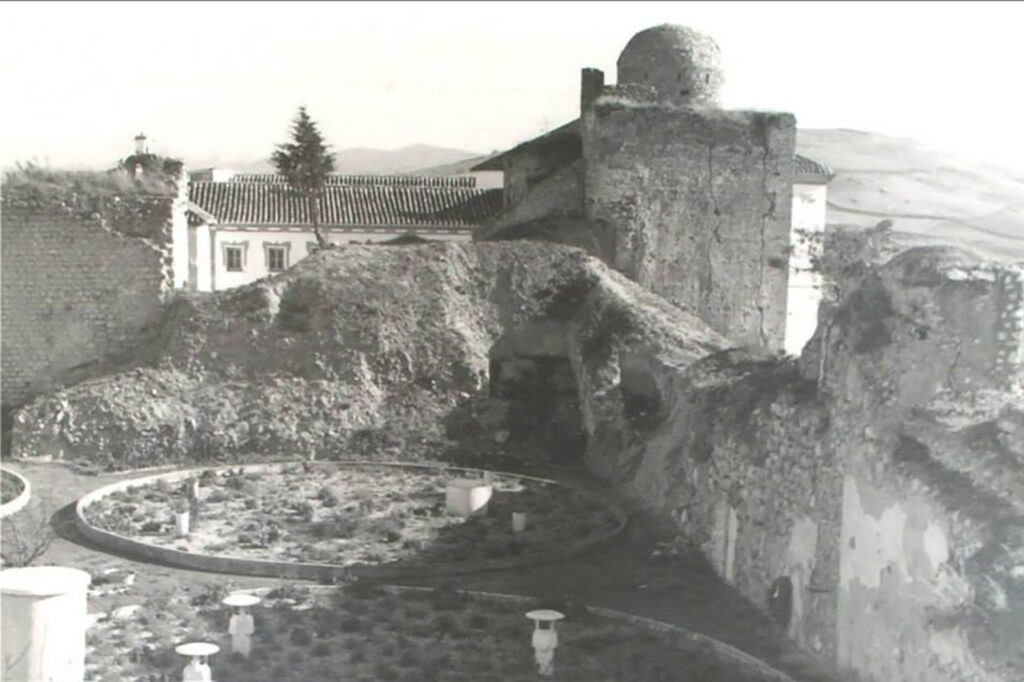
Baena castle
The first references to the castle of Baena are given by Muslim historians from the end of the 9th century , during the revolts of the rebel Omar ibn Hafsún against the emirate of Córdoba. Medina Bayyenathe name under which the town would appear during the Muslim period, it would come to hold the capital of a Cora and therefore would have a citadel where the military garrison and the governor of the province would reside in the fortress or castle built at one end.
During the Almohad periodIn the mid-12th century, and as a result of a series of internal struggles in al-Andalus, the walls and castle of Baena were reinforced and defensive systems were established such as the entries in bend that still persist in the Dark ArcThe main tower is located in the Consolation tower and in the central tower of the south façade of the fortress. It begins a period of decline where the population will be depleted in the purge carried out against the Almoravids and although its past greatness still showed defiantly on the hill of the Almedina, when the troops of Fernando III. the SaintWhen they arrived at its gates on August 24, 1241, the population had already surrendered through a capitulation pact and offered no resistance. The castle, with its improved defenses, would become one of the most prominent in Cordoba and a feared border bastion with the Nasrid kingdom of Granada. This fact led to the fact that during the late Middle Ages, Baena was the scene of important historical events and its fortress, belonging to the Crown, served as accommodation for the highest personalities of the kingdom. It remained so until King John I of Castile gave it as a lordship to the marshal Diego Fernández de Córdoba, a donation that, after the opposition of the neighborhood, would be endorsed in the middle of the 15th century, thus creating the head of the states of Baena and Cabra, to which Albendín, Doña Mencía, Iznájar, Rute and Zambra would also be added.
After the end of the War of Granada, its military character was transmuted into palatial, undertaking large and sumptuous reforms that adapted it as the main residence of the Counts of Cabra and lords of the town. This was a period of great patronage in the locality, with the foundations of the monastery of Madre de Dios and the convents of San Francisco and Santo Domingo. The chapel of the count was erected in Santa María la Mayor, where the abbey of Rute was eventually established. Baena became the prototype of a stately town and its castle-palace the symbol of noble power whose peak was reached in 1566, when Philip II granted the V Count, Gonzalo Fernandez de Cordoba, the title of Duke of Baena.
Over time, and especially after the last lords of the Villa had left it, its internal structures were modified, but the structure remained almost intact until the end of the 19th century. 1879when the noble family sold the fortress and began to be used as a quarry and some buildings were erected in its enclosure. Water tanks were installed in its parade ground between 1927 and 1959, causing serious historical damage that kept its structure in a state of ruin. In 2015, a process of restoration and enhancement was completed, which returned to part of its past splendor. The works began ten years earlier and consolidated the towers and walls that were still preserved, recovering the volumes of those that had ceased to exist. All of this led to its recognition in the 2017 as best architectural project of the year in the Architecture+Preservation category of the prestigious
Architizer A+Awards
and, above all, allowed the enhancement of one of the most relevant enclaves in the history of Baena.

Façade of the Puerta del Campo around 1910.

Machine gun nest in one of the towers.
The citadel of medina Bayyena
The citadel ( from the Arabic al-qaṣbah “the citadel”) was a fortified enclosure of urban character intended for the residence of the governor of the Cora (Muslim province) and which also housed a garrison that often formed a small military quarter with housing and services, constituting a citadel. Thus arose the Almedina baenense that, like others of similar origin, was associated with an alcazar or castle located at one end, independent of the citadel itself and the rest of the city, with its own defenses and entrances, which in the case of Baena are documented in the barbican of the north façade and in the Field Gate. In case of siege, the populations of the urban centers where they settled, sought refuge behind their walls and there was also a large space for livestock, the albacar, which in the case of Baena would have more than 6,000 m2 and would be identified with the current Plaza de Palacio.
Baena's castle
Residence of Arab governors, feared border bastion with the kingdom of Granada, cradle of one of the most important lordships of the Middle Ages, the castle of Baena remains a faithful witness of the vicissitudes of history.